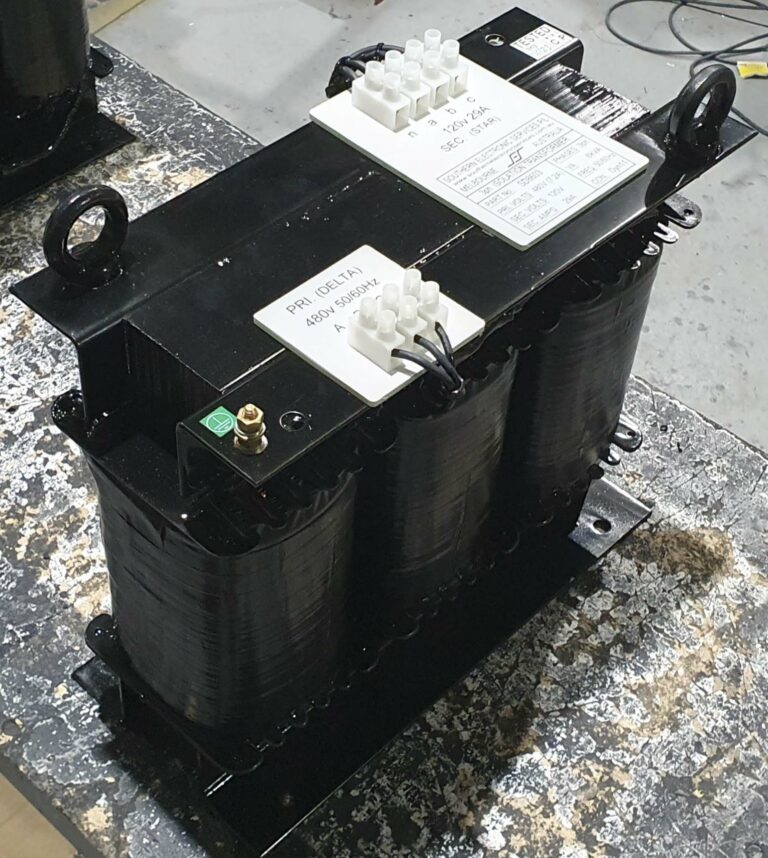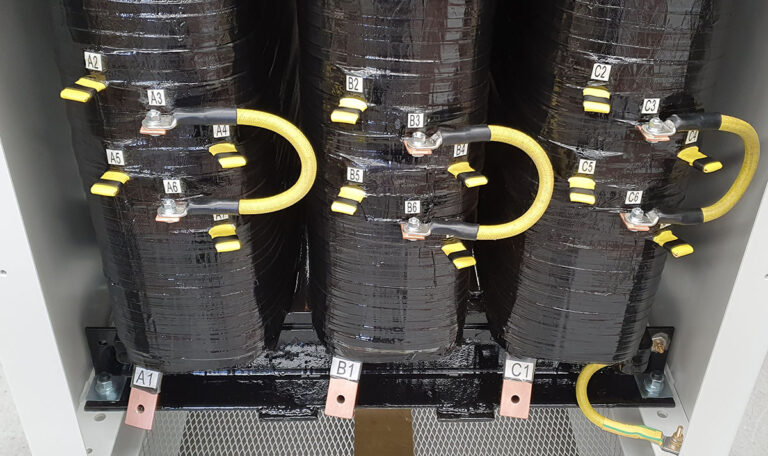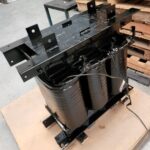Solar panels have gained immense popularity in recent years as a clean and sustainable source of energy.
They harness the power of sunlight and convert it into usable electricity, making them an eco-friendly alternative to traditional fossil fuels. One essential component in a solar power system is the transformer, which is responsible for converting the generated electricity into a form suitable for distribution.
In this blog post, we will explore the transformer commonly used in solar panel installations, its functions, and its importance in optimising solar energy efficiency.
Do You Need a Transformer for Solar Panels?
The short answer is yes – a transformer is necessary for solar power systems to work properly. The electricity generated by the photovoltaic cells within a solar panel is in the form of direct current (DC). However, most electrical appliances run on alternating current (AC). Therefore, a transformer must be used to convert the DC to AC before it can be used in the home or in any other applications. This conversion is essential because most electrical appliances and power grids operate on AC power.
What is DC?
DC stands for direct current and is the form of electricity produced by a variety of power sources, including batteries, solar cells and fuel cells. As its name suggests, DC flows in one direction only. Appliances that run on DC include LED lights, laptops, tablets and smartphones.
What is AC?
AC stands for alternating current and is the type of electricity used for powering most household appliances. AC energy is generated by an AC generator or transformer and is characterised by a waveform that oscillates back and forth, changing direction at intervals. Appliances that run on AC include refrigerators, air conditioners, microwaves and washing machines.
Transformers play a crucial role in this conversion process, ensuring that the voltage levels are adjusted efficiently for power distribution. Moreover, they help with galvanic isolation, preventing the direct flow of DC current into the grid and ensuring safety and proper functioning.
What Transformer is Used in Solar Panels?
The type of transformer commonly used in solar panel installations is known as an “Inverter.” Solar panel systems are equipped with what is called a “Grid-tied Inverter” or “On-grid Inverter,” which is specifically designed to work in synchronization with the utility grid.
Grid-tied inverters are responsible for converting the DC electricity produced by solar panels into AC electricity, which matches the voltage and frequency of the utility grid.
From the inverters, a suitable transformer is then used to step up or step down the AC voltage as needed for transmission into the utility grid.
The transformer ensures that the electricity generated by the solar panel system is optimised for distribution and use in homes and other applications, making it a key component of any solar power system.
Grid-tied inverters also facilitate the process of feeding excess electricity back into the grid, allowing homeowners and businesses to earn credits or receive compensation for the surplus energy they produce – a mechanism commonly referred to as “net metering.”
Types of Transformers Used for Solar Panels
The transformer used in a solar panel system will depend on the voltage and wattage requirements of your system. For residential applications, the most popular type of transformer is a step-up or boost transformer. These transformers increase the voltage level (step-up) as it passes from the PV cell to the inverter, allowing for greater efficiency and power output. Other types of transformers used in solar panel systems include buck-boost transformers and autotransformers which can step-up or step-down voltage depending on the system requirements.
What Is a Solar Transformer?
A solar transformer is a specialised type of transformer designed to handle the unique requirements of solar energy systems. It is typically used in large commercial or industrial installations where more power needs to be generated than what a single inverter can supply.
Solar transformers are typically three-phase devices that can provide up to 10,000 volts of output. They have been designed with additional safety features to reduce the risk of power surges or other issues, making them an ideal option for larger solar installations.
How Does a Solar Transformer Work?
Solar transformers are composed of several individual components, including a main transformer and auxiliary equipment. The main transformer is responsible for taking the DC power generated by solar panels and converting it into AC electricity that matches the utility grid’s voltage and frequency.
In simpler terms, a solar transformer works by taking DC power from the solar panels and feeding it through the main transformer. The transformer then converts the DC electricity into AC power, which can be used in homes or businesses or fed back into the grid.
What Are the Benefits of Solar Transformers?
The primary benefit of using a solar transformer is that they allow for larger solar installations to be connected to the grid, allowing for greater efficiency and more power output. They are also safer than other transformer types due to their additional safety features, so they can be used in larger applications without the risk of power surges or other issues.
Solar transformers are also highly efficient, allowing you to get the most out of your solar installation. As a result, they can help you reduce your electricity bills and generate more power for your home or business.
Key Functions of Grid-Tied Inverters:
- DC to AC Conversion: As mentioned earlier, the primary function of grid-tied inverters is to convert the DC electricity produced by solar panels into AC electricity that can be used to power homes and businesses.
- Maximum Power Point Tracking (MPPT): Grid-tied inverters incorporate MPPT technology to maximize the energy output from the solar panels. MPPT ensures that the inverter operates at the optimal voltage and current for maximum efficiency, even when solar panel output is affected by shading or varying sunlight conditions.
- Synchronization with the Grid: Grid-tied inverters are designed to match the voltage and frequency of the utility grid, allowing seamless integration of solar-generated electricity with the existing power supply.
- Anti-Islanding Protection: To ensure safety and prevent accidents, grid-tied inverters are equipped with anti-islanding protection, which detects grid outages and shuts down the inverter to avoid energizing the grid during maintenance or emergencies.
How Do I Choose a Solar Power Plant Transformer?
Choosing the right solar power plant transformer is crucial for the optimal operation of your solar panel system. There are several factors to consider when making your selection:
- Transformer Size: You should select a transformer that is appropriately sized for your solar power system. The size of the transformer is determined by the maximum DC output of the solar panel array. An undersized transformer may not be able to handle the power generated by the system and could result in inefficiency or damage.
- System Voltage: The transformer should also be chosen based on the solar panel system’s voltage. If the system operates at a higher voltage, a transformer that can withstand this output should be selected.
- Location: Depending on where the transformer will be installed, certain additional factors may need to be considered. For instance, outdoor installations may require a transformer that is weatherproof and resistant to temperature fluctuations.
- Regulations and Standards: The transformer must comply with local and national electrical codes and standards. These regulations ensure the safety and performance of the transformer and the entire solar power system.
- Manufacturer’s Reputation: It’s important to choose a transformer from a reputable manufacturer that offers a solid warranty and support. This ensures that you can count on the product’s reliability and have peace of mind with your purchase.
If you carefully consider these factors, you can choose a solar power plant transformer that best fits your requirements and contributes to the efficient functioning of your solar power system.
Conclusion
Solar panels are an environmentally friendly and renewable energy source that can significantly reduce our dependence on fossil fuels. To harness their full potential, grid-tied inverters play a crucial role in converting the direct current produced by solar panels into usable alternating current that can power our homes and businesses.
As the solar industry continues to evolve, advancements in inverter technology will likely lead to even greater efficiency and integration capabilities, driving us closer to a sustainable and greener future.
At Southern Electronics Services, we carry a wide selection of transformers that are designed to provide optimal performance and meet the highest safety standards. If you have any questions or need assistance selecting the right transformer for your application, don’t hesitate to contact us today.
Next Post
SES Transformers in Australia’s new US Embassy
June 16, 2023Other News

Types of Transformers for Data Centres
SES Isolation Transformers: Reliable Power Solutions If you need stable, clean power to protect sensitive equipment from electrical noise, surges, and interference, isolation transformers are your best choice. At Southern Electronic Services (SES), we specialise in high-quality isolation transformers that deliver exceptional performance and reliability across a wide range of industries, from industrial operations to…

Function of Transformers in Data centers
The Growing Demand for Data Centers in a Cloud-Based, AI-Driven World The digital age has witnessed explosive growth in data generation, storage, and processing, leading to a sharp rise in the construction of data centers globally. With the increasing adoption of cloud-based storage and the rapid expansion of artificial intelligence (AI) technologies, the world’s computing…


